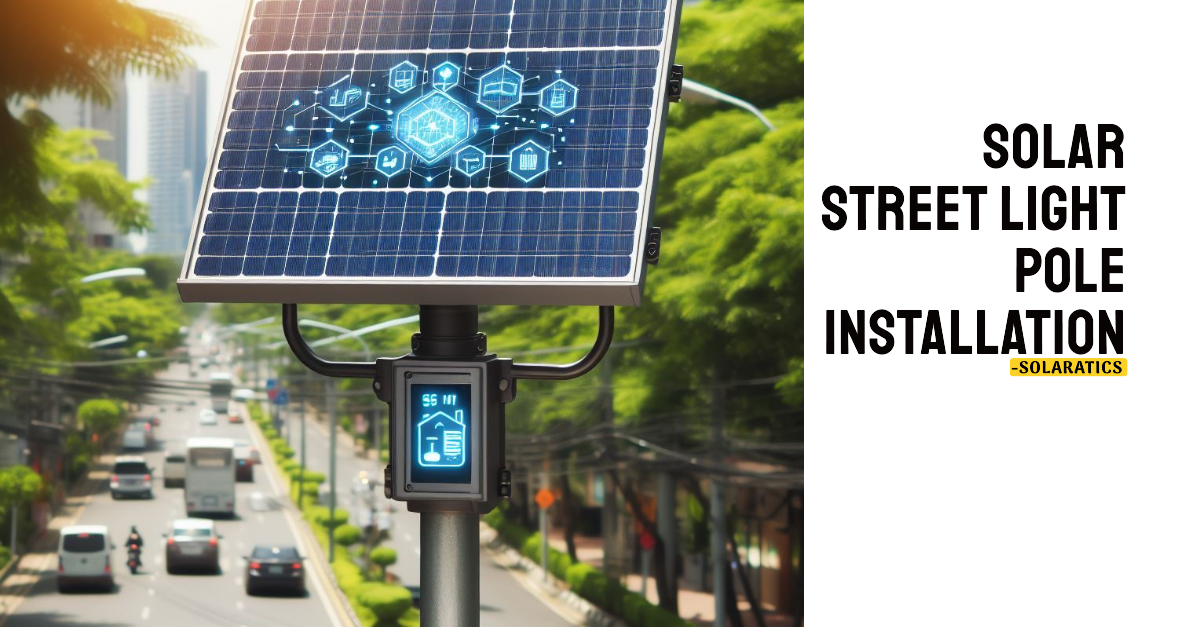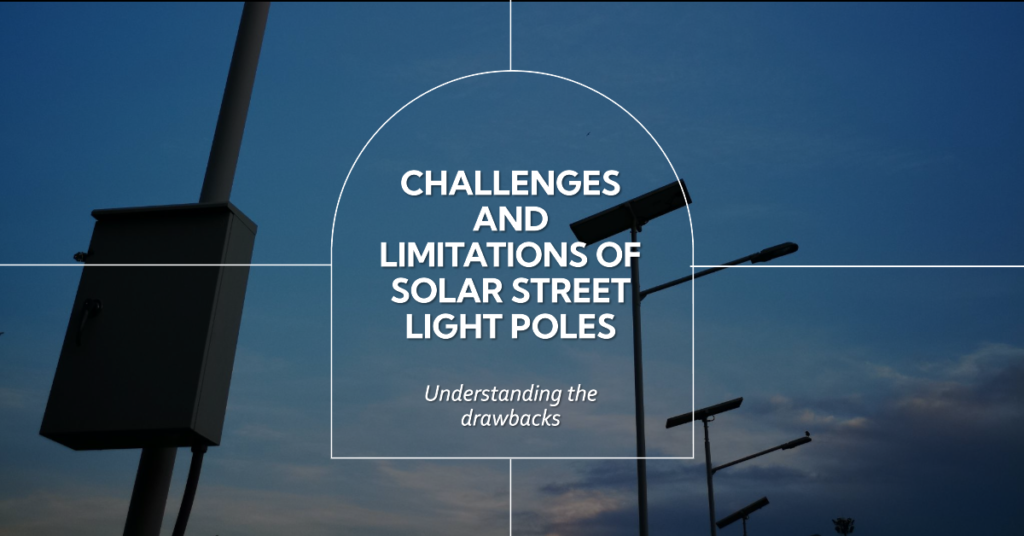Solar Street Light Pole: Everything About Installation & Challenges

Imagine streets bathed in warm light at night, not powered by traditional electricity, but by the power of the sun. This is the magic of solar street light poles. These innovative lighting solutions are rapidly transforming urban landscapes, offering a sustainable and cost-effective way to illuminate our communities.
The Importance of Solar Street Light Poles
Solar street light poles are crucial for several reasons. First, they promote sustainability by harnessing the power of the sun, a clean and renewable energy source. This reduces dependence on fossil fuels and greenhouse gas emissions, contributing to a healthier planet.
Second, they offer cost-effectiveness. After the initial installation, they require minimal maintenance and eliminate electricity bills, leading to significant long-term savings. Additionally, they improve safety and security by providing better visibility at night, creating a safer environment for pedestrians, cyclists, and drivers.
Components of a Solar Street Light Pole
A typical solar street light pole consists of several key components working together. The solar panel captures sunlight and converts it into electricity using photovoltaic cells.

A typical solar street light pole consists of several key components:
- Solar panel: This panel captures sunlight and converts it into electricity using photovoltaic cells.
- Battery: The battery stores the generated electricity for use during the night or cloudy days.
- LED light fixture: This fixture uses energy-efficient LEDs to illuminate the area.
- Charge controller: This device regulates the charging and discharging of the battery, preventing overcharging or damage.
- Pole: This sturdy structure supports the entire system and positions the light fixture at the desired height.
How Solar Street Light Poles Work
The working principle of a solar street light pole is straightforward. During the day, sunlight falls on the solar panel, triggering the photovoltaic effect. This effect converts sunlight into electricity, which is then directed to the battery for storage.
When the sun sets and darkness falls, the stored electricity powers the LED light fixture, illuminating the surrounding area. Throughout this process, the charge controller ensures the battery is charged and discharged efficiently, preventing damage and maximizing its lifespan.
Advantages of Solar Street Light Poles Over Traditional Lighting

Solar street light poles offer several advantages compared to traditional street lights:
- Sustainability: They promote a clean and renewable energy source, reducing environmental impact.
- Cost-effectiveness: They offer significant long-term cost savings due to minimal maintenance and no electricity bills.
- Reliability: They operate independently of the power grid, providing consistent illumination even during outages.
- Low Maintenance: LED fixtures have a longer lifespan and require less maintenance compared to traditional bulbs.
- Aesthetics: Their sleek design can enhance the visual appeal of various landscapes.
Installation Process
Installing a solar street light pole typically involves a series of steps. The process begins with a site evaluation, where experts assess the location for factors such as sunlight exposure, ground stability, and potential obstructions.
After selecting a suitable location, a foundation hole is dug to secure the pole with concrete or other anchoring methods, ensuring its stability.
The solar panel and light fixture are then mounted on the top of the pole, followed by the careful electrical connection of all system components, including the battery, charge controller, and light fixture.
Finally, the entire system undergoes rigorous testing and commissioning to ensure it functions properly and meets all performance specifications.
Applications of Solar Street Light Poles
Installing a solar street light pole typically involves the following steps:
- Site evaluation: Assessing the location for sunlight exposure, ground stability, and potential obstructions.
- Pole foundation: Digging a foundation hole and securing the pole with concrete or other anchoring methods.
- Panel and fixture mounting: Attach the solar panel and light fixture to the top of the pole.
- Electrical connection: Wiring the system components, including the battery, charge controller, and light fixture.
- Testing and commissioning: Ensuring the system functions properly and performs to its specifications.
Challenges and Limitations

Although solar street light poles offer numerous benefits, it’s important to acknowledge some challenges and limitations. The initial cost of installation can be higher compared to traditional lighting systems.
Additionally, the effectiveness of the system relies on sufficient sunlight, and cloudy weather can impact its performance. In areas with extended periods of darkness, additional battery capacity or alternative lighting sources might be needed.
Innovations for Solar Street Light Poles
The future of solar street light poles is bright with continuous advancements in technology:
- Increased efficiency: Improvements in solar panel efficiency and battery technology will enhance performance and affordability, making them even more cost-competitive.
- Smart lighting systems: Integration with smart controls and sensors can optimize energy use and adjust lighting based on real-time conditions, such as weather and pedestrian activity.
- Self-cleaning panels: Technological advancements might lead to self-cleaning solar panels, minimizing maintenance requirements and maximizing light capture.
Conclusion
Solar street light poles offer a sustainable, cost-effective, and reliable lighting solution for our communities. They promote environmental responsibility, enhance safety, and contribute to a brighter future for all.
As technology continues to evolve, we can expect even more innovative and efficient solar street light poles to illuminate our streets and our path toward a brighter tomorrow.
Also Explore: Beat the Heat: How to Cool Your House Without AC OR Top Tips to Reduce Electricity Consumption at Home
